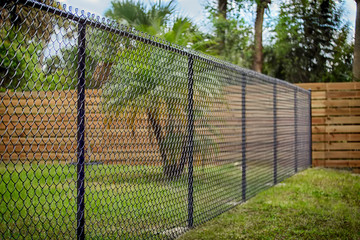In the vast digital landscape, where competition for user attention is fierce, website navigation serves as the unsung hero of user experience. The importance of website navigation for user experience cannot be overstated, as it directly influences how visitors interact with your site, how easily they find the information they need, and ultimately, how likely they are to return.
Navigating the User Experience
Website navigation and user experience are intertwined in ways that can make or break a site’s effectiveness. Imagine walking into a store where the aisles are disorganized, the signs are unclear, and products are scattered. Frustrating, right? The same applies to a website with poor navigation. If users cannot find what they are looking for swiftly and effortlessly, they are likely to leave in frustration and seek out a more user-friendly alternative.
1. User-Focused Design
When designing your website, prioritize user-centric navigation. This approach places the visitor’s needs at the forefront, ensuring they can find what they need with minimal effort. How navigation impacts website usability hinges on this very principle—intuitive navigation systems facilitate a smooth user journey, while convoluted structures create barriers.
1.1 Logical Structure
A well-structured website organizes content in a logical hierarchy. Main categories should be broad enough to encompass related subcategories, which in turn should group similar topics together. For instance, an e-commerce site might have primary navigation categories like “Electronics,” “Clothing,” and “Home Goods,” each with subcategories such as “Laptops,” “Smartphones,” and “Headphones” under Electronics. This logical segmentation helps users quickly locate their desired items.
1.2 Clear Labels
Labels and menu items should be descriptive and easy to understand. Avoid jargon or vague terms that could confuse visitors. For example, instead of “Products,” use “Shop by Category” to provide a clearer sense of what users will find when they click.
2. Enhancing Usability Through Design
Enhancing user experience through better navigation involves more than just a clear menu structure. It encompasses the design elements that contribute to a seamless browsing experience.
2.1 Responsive Design
In today’s multi-device world, your website navigation must be responsive. This means it should adapt effortlessly to various screen sizes, from desktops to smartphones. Mobile users often rely on simplified navigation menus, such as hamburger icons, which should still provide easy access to key areas of the site.
2.2 Consistent Navigation
Consistency in navigation elements, such as menu placement and styling, helps users familiarize themselves with your site’s layout. When users encounter familiar navigation patterns, they can navigate more confidently. Ensure that your navigation menu remains in the same location across different pages and maintain a consistent style.
3. The Impact on User Retention
An intuitive navigation system not only enhances the immediate user experience but also contributes to long-term user retention. The importance of website navigation for user experience extends to how it influences visitors’ likelihood of returning to your site.
3.1 Reduced Bounce Rates
A clear and effective navigation system reduces bounce rates by enabling users to find information quickly. When users can effortlessly locate what they need, they are less likely to leave your site in frustration and more likely to explore additional content.
3.2 Increased Engagement
Good navigation encourages deeper engagement with your site. When users find it easy to navigate to related content or products, they spend more time interacting with your site. This increased engagement can lead to higher conversion rates and improved overall satisfaction.
4. Tools and Techniques for Improving Navigation
Several tools and techniques can help you optimize your website’s navigation to enhance user experience.
4.1 Breadcrumb Trails
Breadcrumb trails provide users with a navigational path showing their current location within the site’s hierarchy. This feature helps users understand their position relative to other pages and facilitates easy backtracking.
4.2 Search Functionality
Integrating a robust search feature allows users to bypass the navigation menu and find specific content or products directly. Ensure your search bar is prominently placed and offers relevant suggestions or autocomplete options.
4.3 User Testing
Regular user testing can reveal how real users interact with your navigation. Observing users as they navigate your site provides valuable insights into any obstacles they encounter and areas for improvement.
Conclusion
The importance of website navigation for user experience is a crucial factor in the success of any online platform. Effective navigation enhances usability, reduces frustration, and encourages users to engage more deeply with your content. By prioritizing clear, intuitive design and regularly refining your navigation system, you can create a more enjoyable and efficient browsing experience that keeps visitors coming back. Remember, a well-navigated website is a gateway to a positive user experience and long-term success.





More Stories
Minimalist Web Design: Less is More
How to Create a User-Friendly Website Layout
How to Use Typography Effectively in Web Design